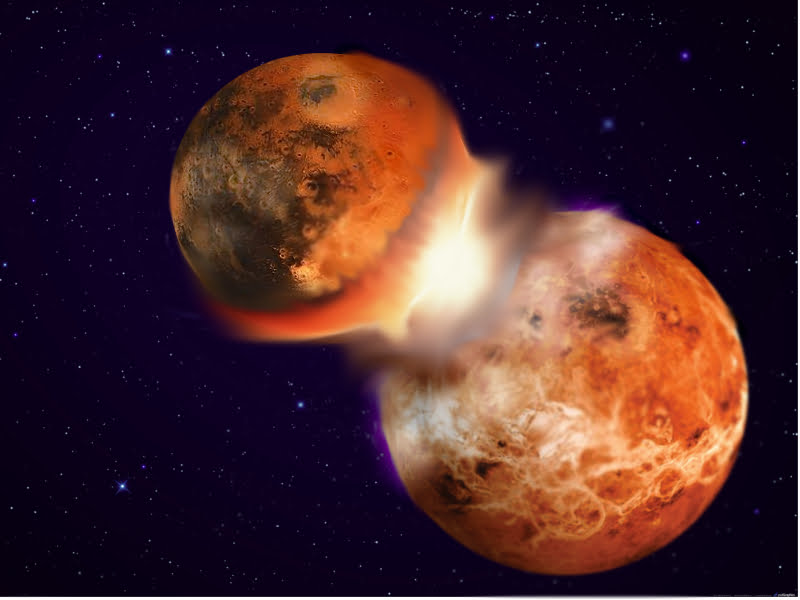For decades, scientists have been trying to understand how and when the moon was formed. Until now, the dominant theory has been that the moon was created roughly 4.5 billion years ago from the debris that came off the earth’s surface after it had collided with another small planet. This was the prevailing theory because most of the moon’s geological makeup is similar to Earth’s composition. Surprisingly, what makes the earth and the moon almost identical is actually the planet that collided with Earth called Theia, a groundbreaking study shows.
SEE ALSO: Are We Alone In The Universe? Research Says Chances Of Advanced Alien Life Are Slim
The study, conducted at the Technion-Israel Institute of Technology, suggests that the moon was formed out of the remnants of a small planet called Theia (“the impactor”), which hit Earth during a celestial collision. And, since Theia and Earth “grew up” in the same environment, they share many of the same materials.
The research, which is based on complex computer simulations of such collisions, was recently published in the scientific journal Nature. It was conducted by Alessandra Mastrobuono-Battisti and Hagai Perets of the Technion, along with Sean Raymond of the University of Bordeaux. “It turns out that an impactor is not similar to any other random body in the solar system. The Earth and Theia appear to have shared much more similar environments during their growth than just any two unrelated bodies,” explains Mastrobuono-Battisti. “In other words, Theia and Earth were formed in the same region, and have therefore collected similar material. These similar living environments also led them eventually to collide; and the material ejected mostly from Theia, ultimately formed the moon.”
Technion study casts a long shadow on previous theories
Over the past 30 years – and while astrophysicists have been grappling with the formation of the moon – the accepted theory has been the “giant impact hypothesis” (also known as the Big Splash or The Theia Impact), whereby the moon was formed out of the debris left over from an indirect collision between the earth and an astronomical body the size of Mars called Theia approximately 4.5 billion years ago.
Sign up for our free weekly newsletter
SubscribeSEE ALSO: What’s With The Crazy Weather On Uranus And Neptune?
Now, the revolutionary Technion study casts a long shadow on the “giant impact” model, showing that a greater percentage of these “impactors” actually matched Earth’s composition. “Our results reconcile what has been perceived as a contradiction between the process whereby moons are formed (from matter from the impacting body) and the similarity between Earth and the moon,” Mastrobuono-Battisti said in a statement. Perets adds: “The earth and the moon might not be twins born of the same body, but they did grow up together in the same neighborhood.”
So, it looks like the age-old mystery of the moon, which has fascinated humankind since the earliest days of history, has been solved; now, children won’t have to ask their parents whether the moon is made of cheese!
Photos: NASA, Technion, Audrey, National Cancer Institute
Related posts

Resilient And Nutritious New Plant-Based Milk Aims To Make A Splash

Chocolate From Cultivated Cocoa Comes Without Environmental Toll

Plastic Fantastic: Startup Takes PVC Back To Its Crude Oil Roots






Facebook comments